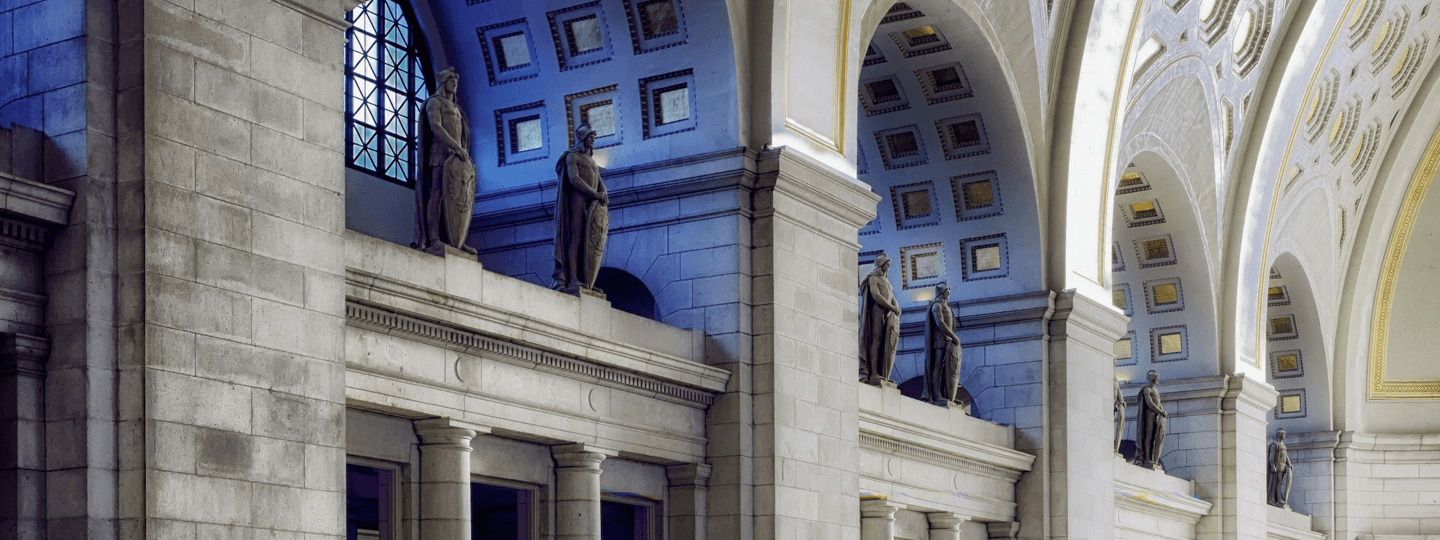This Week in CRE History: Full Steam Ahead for D.C.’s Union Station
This week, 113 years ago, Washington D.C.’s Union Station came into existence. The Beaux-Arts masterpiece would serve as one of the biggest transportation hubs for the federal capital and a testament to adaptive reuse.
Two stations become one
Trains had been arriving in Washington D.C. long before Union Station was chartered. In fact, there were two stations: one run by Pennsylvania Railroad and one run by Baltimore and Ohio Railroad. The two-station approach was crowding the National Mall and limiting the influx of more visitors to the burgeoning metropolis (a single, large station would be able to support more visitors than two smaller ones).
In 1901, the two railroad companies announced their plan to build a joint station. Two years later, Congress passed “An Act to provide a union railroad station in the District of Columbia.” President Theodore Roosevelt signed it into law on February 28th, 1903, and authorized the Washington Terminal Company to construct a station that was “monumental in character.” Daniel Burnham, renowned architect, was assigned the responsibility.
The choice location for such a monumental station? A boggy and marshy neighborhood named Swampoodle.
The rise and fall
Union Station was completed in April 1908, but took another few decades to reach its full potential. During the 1940s, the station became a major transportation hub for the war effort, serving nearly 200,000 passengers a day.
But, in the aftermath of the war, the station fell into disrepair. The wear-and-tear of the previous decade — combined with the relative inactivity of the 1950’s — left Union Station as a shadow of its former self. The federal government took over the building for a new National Visitor Center in the 1960’s, ultimately naming it to the National Register of Historic Places.
The literal breaking point of the station’s decay came in 1981 “when a driving rain sent pieces of the ceiling, already damaged by a leaky roof, crashing down into the main waiting room.” It was falling apart.
The renovation
Later that year, Congress passed the Union Station Redevelopment Act and tasked the Department of Transportation to figure out the best approach.
What followed was one of the most successful adaptive reuse projects to date. A public/private partnership was formed in 1983 between the government and three firms — LaSalle Partners Limited, Williams Jackson Ewing, and Benjamin Thompson & Associates Architects — with the goal of revitalizing the failing station.
The $160 million renovation took just over two years to complete. It restored the aesthetics of the building and introduced over 200,000 square feet of retail space, 50,000 square feet of restaurant space, and 100,000 square feet of office space. Hundreds of eateries and specialty shops flooded the space; Amtrak seized the office space as its national headquarters.
Today, the station see an estimated 90,000 visitors through its doors each day. Growth in the station has also translated into the surrounding neighborhoods.The convenience and vibrancy brought by the station have encouraged further development of, for example, the Capitol Hill neighborhood — as both a residential and office neighborhood.
Next time you’re in DC, make sure to check out the station.





